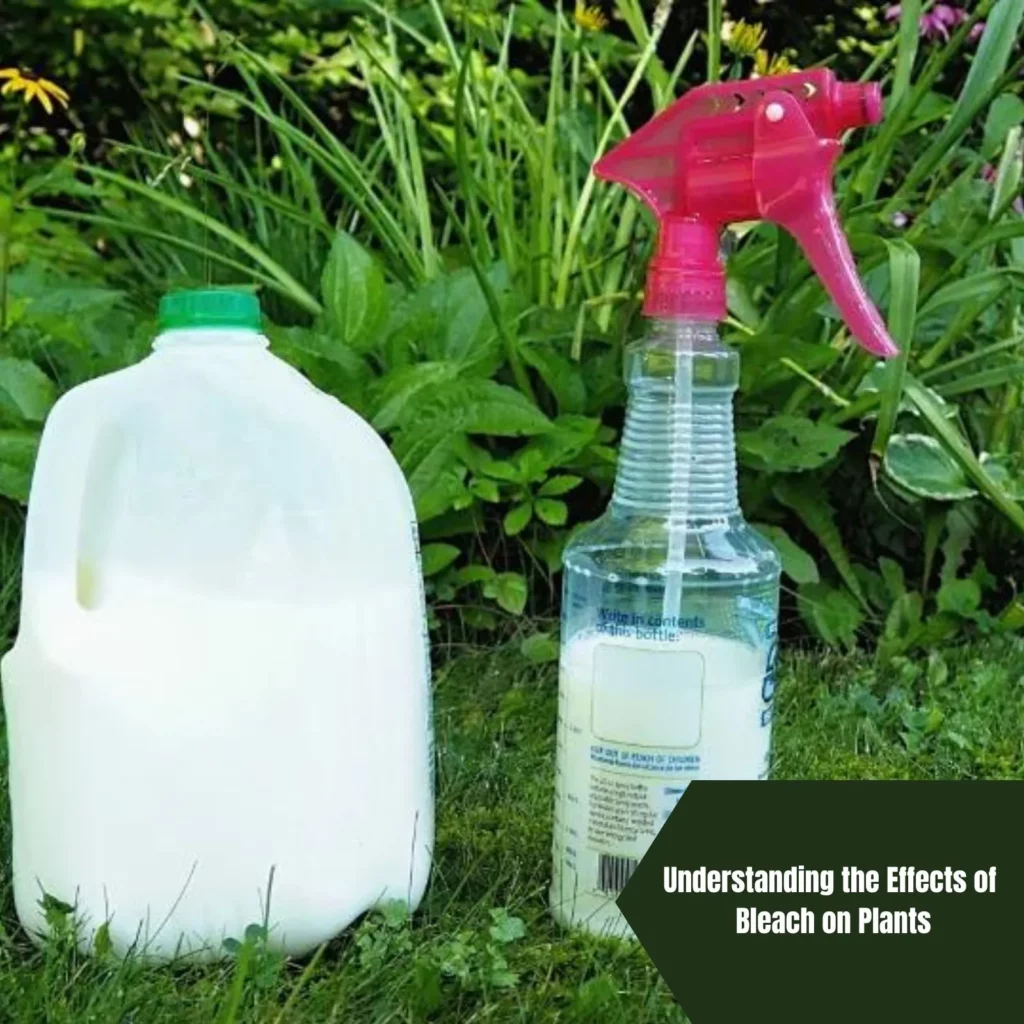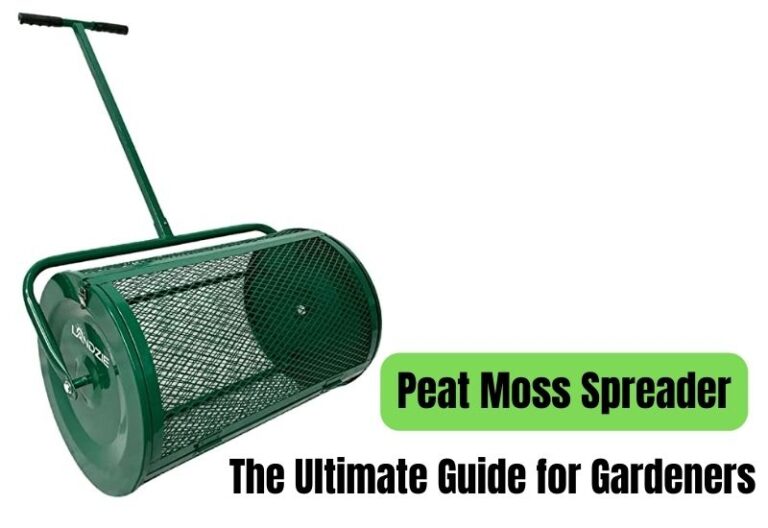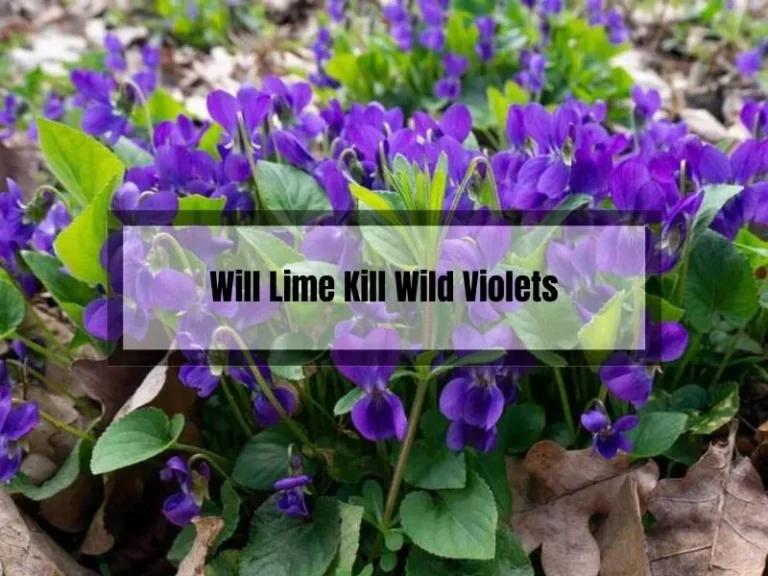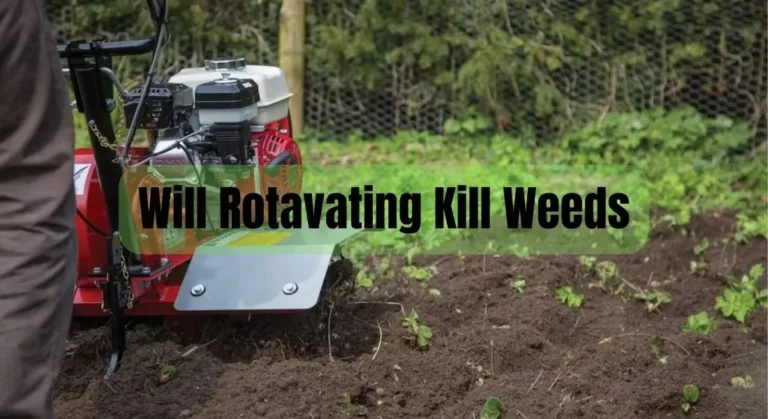Will Diluted Bleach Kill Plants? Exploring Its Effects on Plant Life
You love your garden and want to keep it healthy and thriving. But what happens when you notice signs of fungal disease or other issues affecting your plants? You may have heard that diluted bleach can help stop the spread of disease and breathe new life into your garden. But will diluted bleach kill plants?
The answer is yes, diluted bleach can kill plants if not used properly. While bleach can be a powerful tool for cleaning and disinfecting, it can also be harmful to plants if not used in the right way. Understanding the effects of bleach on plants and how to use it safely is key to keeping your garden healthy and beautiful.
Key Takeaways
- Diluted bleach can kill plants if not used properly.
- Understanding the effects of bleach on plants and how to use it safely is key to keeping your garden healthy and beautiful.
- There are alternatives to using bleach for plant care, and it’s important to be aware of possible risks and precautions before using bleach in your garden.

Will Diluted Bleach Kill Plants
If you’re a plant lover, you might be wondering if using diluted bleach will harm your plants. The answer is yes, but it depends on the concentration of the bleach and how you use it. Here’s what you need to know:
How Does Diluted Bleach Affect Plants?
Diluted bleach can kill plants by damaging their roots and leaves. It can also kill beneficial microorganisms in the soil, which can harm the plant’s growth.
However, if used properly, diluted bleach can also be used to prevent the spread of fungal diseases in plants.
How to Use Diluted Bleach on Plants
If you want to use diluted bleach on your plants, it’s essential to use the right concentration. The recommended concentration is one part bleach to nine parts water. This concentration is safe for most plants, but it’s always best to test it on a small area of the plant first.
To use diluted bleach on plants, mix the bleach and water in a spray bottle and spray the affected area. Be sure to avoid spraying the leaves and flowers, as bleach can burn them.
Precautions When Using Diluted Bleach on Plants
When using diluted bleach on plants, it’s essential to take precautions to prevent damage. Here are some tips to keep in mind:
- Always wear gloves and eye protection when handling bleach.
- Never use undiluted bleach on plants, as it can kill them.
- Avoid spraying bleach on the leaves and flowers of plants.
- Rinse the plant with water after using bleach to remove any residue.
Understanding the Effects of Bleach on Plants

If you’re thinking about using bleach to take care of your plants, it’s important to understand the effects it can have on them. While bleach can be an effective cleaner and disinfectant, it can also be harmful to plants if used improperly.
When bleach comes into contact with plant leaves, it can cause the leaves to turn yellow or brown. In some cases, the leaves may drop off the plant completely. This is because bleach is highly alkaline and can damage the delicate tissues of plants.
Additionally, bleach can kill beneficial microorganisms in the soil that are important for plant growth and health. This can lead to a decrease in soil fertility and an increase in the likelihood of plant diseases.
If you do decide to use bleach on your plants, it’s important to dilute it properly. A solution of one part bleach to nine parts water is generally safe for most plants. However, it’s always a good idea to test the solution on a small, inconspicuous area of the plant first to make sure it doesn’t cause any damage.
It’s also important to avoid getting bleach on the soil around the plant, as this can harm the beneficial microorganisms in the soil. If you do accidentally get bleach on the soil, be sure to rinse it thoroughly with water.
In general, it’s best to avoid using bleach on plants unless it’s absolutely necessary. There are many other natural and less harmful ways to keep your plants healthy and disease-free.
How to Use Diluted Bleach Safely
If you’ve decided to use diluted bleach to treat your plants, it’s important to use it safely to avoid damaging or killing your plants. Here are some tips to help you use diluted bleach safely:
Dilute the bleach properly
When using bleach to treat your plants, it’s important to dilute it properly. The amount of bleach you use will depend on the type of plant you’re treating, so be sure to do your research before you start.
As a general rule, you should use no more than one tablespoon of bleach per quart of water when treating plants.
Wear protective gear
When using bleach, it’s important to wear protective gear to avoid getting the bleach on your skin or in your eyes.
Wear gloves, long sleeves, pants, and goggles to protect yourself while handling bleach.
Test the bleach on a small area first
Before you start treating your plants with bleach, it’s a good idea to test it on a small area first. This will help you determine if the bleach is safe for your plants and if it will cause any damage or discoloration.
Apply the bleach carefully
When applying bleach to your plants, be careful not to get it on the leaves or stems. Apply the bleach to the soil around the plant, and be sure to water the plant thoroughly afterwards to help dilute the bleach.
Use bleach sparingly
While bleach can be an effective treatment for some plant diseases, it’s important to use it sparingly. Overusing bleach can damage the soil and harm your plants, so be sure to use it only when necessary.
By following these tips, you can use diluted bleach safely and effectively to treat your plants. Remember to always do your research and test the bleach on a small area before treating your plants to avoid any damage or discoloration.
Alternatives to Using Bleach for Plant Care
When it comes to plant care, bleach is not always the best solution. While it may be effective at killing harmful bacteria and fungi, it can also be damaging to plants if not used correctly.
Fortunately, there are alternative methods that you can use to keep your plants healthy and free from pests.
Natural Insecticides
One effective alternative to bleach is natural insecticides. These are made from natural ingredients like neem oil, garlic, and pyrethrum, which are all effective at killing pests without harming your plants. They are also safe for the environment and can be used on a wide range of plants.
Companion Planting
Another alternative to bleach is companion planting. This involves planting certain plants together to help repel pests.
For example, planting marigolds with your vegetables can help keep pests away, while planting basil with your tomatoes can help improve their flavor.
Horticultural Oils
Horticultural oils are another effective alternative to bleach. These are made from natural oils like neem, soybean, and canola, and are effective at killing pests and preventing the spread of disease. They are also safe for your plants and the environment.
Soap Sprays
Soap sprays are another alternative to bleach that can be effective at killing pests. These are made from natural ingredients like castile soap and can be sprayed directly onto your plants to kill pests like aphids and spider mites. They are also safe for your plants and the environment.
Overall, there are many alternatives to using bleach for plant care. By using natural insecticides, companion planting, horticultural oils, and soap sprays, you can keep your plants healthy and free from pests without harming them or the environment.
The Role of Bleach in Gardening
If you’re a gardener, you know how important it is to keep your plants healthy and disease-free. One way to do this is by using bleach.
Yes, you read that right! Bleach can be used as a powerful tool in gardening. Here’s what you need to know about the role of bleach in gardening.
Using Diluted Bleach for Plants
Bleach can be used to kill off harmful bacteria, fungi, and viruses that can infect your plants. However, it’s important to use it in the right way. When using bleach on plants, it’s essential to dilute it properly.
Using undiluted bleach can be harmful to your plants and can even kill them. The recommended ratio for diluted bleach is one part bleach to nine parts water.
How Bleach Can Help Your Garden
Using diluted bleach can help stop the spread of fungal diseases in plants. It can also help clean and disinfect gardening tools, pots, and other equipment. Additionally, bleach can be used to clean up areas of your garden that have been affected by pests or diseases.
Safety Considerations
While bleach can be a valuable tool in gardening, it’s important to take safety precautions when using it. Bleach is a strong chemical and can be harmful if ingested or inhaled.
Always wear gloves and protective eyewear when working with bleach. Additionally, it’s important to use bleach in a well-ventilated area to avoid breathing in fumes.
Possible Risks and Precautions
Although diluted bleach can be useful for preventing fungal diseases and keeping outdoor pots and pools mold- and mildew-free, it can also be harmful to plants if not used properly. Here are some precautions to keep in mind when using diluted bleach on your plants:
- Dilute the bleach properly: Using undiluted bleach can be too harsh for plants and can cause damage or even death. Mix one part bleach to nine parts water to create a diluted bleach solution that won’t harm your plants.
- Avoid using bleach on all plants: Not all plants can handle bleach, so it’s essential to research which plants can tolerate it before using it. Some plants, like succulents, are more sensitive to bleach and can be damaged by it.
- Apply bleach solution carefully: When applying the bleach solution, use a spray bottle or a sponge to apply it carefully to the affected areas. Be sure to avoid getting bleach on the plant’s leaves or stems, as this can cause damage.
- Rinse thoroughly: After applying the bleach solution, rinse the plant thoroughly with water to remove any excess bleach. This will help prevent damage to the plant and ensure that it stays healthy.
- Wear protective gear: Always wear gloves and eye protection when working with bleach to avoid skin and eye irritation.
By following these precautions, you can use diluted bleach safely on your plants without causing any harm. Remember to research which plants can tolerate bleach and to dilute the bleach properly before use.
Case Study: Effects of Diluted Bleach on Different Plant Types
When it comes to using bleach on plants, it’s important to understand that different types of plants can react differently to the chemical. Here’s a closer look at the effects of diluted bleach on various plant types:
Succulents and Cacti
Succulents and cacti are known for their hardiness and ability to tolerate harsh conditions. However, even these tough plants can be damaged by bleach.
When exposed to diluted bleach, succulents and cacti may experience leaf burn, which can cause the leaves to become discolored or even fall off. In some cases, bleach exposure can even lead to the death of the plant.
Flowers
Flowers are often more delicate than other types of plants, and as such, they can be more sensitive to bleach.
When exposed to diluted bleach, flowers may experience leaf burn, which can cause the leaves to become discolored or fall off. Additionally, bleach can also damage the flower buds, preventing them from blooming.
Trees and Shrubs
Trees and shrubs are typically hardier than flowers and may be able to tolerate diluted bleach exposure better. However, it’s still important to be cautious when using bleach around these plants.
If exposed to bleach, trees and shrubs may experience leaf burn, which can cause the leaves to become discolored or fall off. Additionally, bleach can also damage the bark of the tree, which can lead to long-term damage.
Vegetables and Fruits
If you’re using bleach in a vegetable or fruit garden, it’s important to be extremely careful.
Bleach can damage the leaves and fruit of these plants, making them unsafe to eat. Additionally, bleach can also damage the soil, making it less hospitable to future plants.
Grass
Grass is typically hardy and can tolerate diluted bleach exposure. However, it’s important to be cautious when using bleach on grass, as it can still cause leaf burn. Additionally, bleach can damage the roots of the grass, which can lead to long-term damage.
Overall, while diluted bleach can be useful for cleaning and disinfecting, it’s important to be cautious when using it around plants. Different plant types can react differently to bleach, and even hardy plants can be damaged by exposure.
If you do choose to use bleach around plants, be sure to dilute it properly and apply it carefully to avoid damaging your greenery.
Frequently Asked Questions (FAQs)
Can diluted bleach harm my garden plants?
Yes, it can. Bleach is a powerful chemical that can cause damage to your plants if not used properly. It can burn the leaves, stems, and flowers of your plants, and it can also damage the roots and kill healthy microorganisms in the soil.
However, if used in the right amount and concentration, bleach can be a useful tool to stop the spread of fungal diseases in your plants.
What should I do if I accidentally spray bleach on my plants?
If you accidentally spray bleach on your plants, you should immediately rinse them off with water. This will dilute the bleach and prevent it from causing further damage to your plants.
If the damage is severe, you may need to prune the affected parts of the plant or even replace it entirely.
Will diluted bleach kill grass in my lawn?
Yes, it can. Bleach is a powerful herbicide that can kill grass and other plants in your lawn if used in high concentrations.
However, if used in the right amount and concentration, bleach can be a useful tool to remove weeds and other unwanted plants from your lawn.
Can I use bleach as a fungicide on my plants?
Yes, you can. Bleach can be an effective fungicide to stop the spread of fungal diseases in your plants. However, you should always dilute the bleach and use it in the right concentration to prevent damage to your plants.
How long does it take for bleach to kill grass?
It depends on the concentration of bleach and the type of grass. In general, it can take anywhere from a few days to a few weeks for bleach to kill grass.
However, it is important to remember that bleach is a powerful chemical that can cause damage to your lawn, so it should be used with caution.
What is the safe percentage of bleach to use on plants?
The safe percentage of bleach to use on plants is 0.5% to 1%. This means that you should dilute one part bleach with 9 to 19 parts water before using it on your plants. Using a higher concentration of bleach can cause damage to your plants and the surrounding environment.





